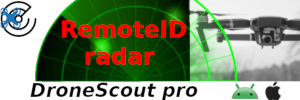I don't think your really understanding the situation or have a true grasp on any of this. Given in the one post above this (#17) you say this, basically blaming and presuming DJI for things, then retract it with this post (Below is quote of #17 post)...Your mixing and giving falsehoods and trying to out think the FAA it seems.The problem as I see it, and I very well could be wrong, is that I don't think the FAA really knows what it wants or how best to implement it or else everything would have been laid out for us to be armchair lawyers and engineers to pick apart. Instead they put forth a general concept of what they want and expected everyone to 'just get it'. I think thats why even DJI isn't guaranteeing that they meet the requirements and so many other companies are focusing on sub250g drones. With the Air2s I think they probably hoped as the industry leader for consumer drones that what they had already installed for the MA2 and Air2s was going to be good enough to comply. Take these 2 statements from DJI
'This careful phase-in period gives time for the drone industry to develop standards for the Remote ID radio broadcast, and for the FAA to confirm that these methods comply with the rules' and 'Most likely, that means drones will send a Bluetooth or WiFi signal that can be received by a smartphone'. How can DJI be sure that what's already in place will meet standards that haven't been fully developed yet and if its' most likely' wifi or Bluetooth that doesn't mean it is, just that DJI sees it as the easiest or cheapest way. (This is but one "guess", but in reality it is what they have been lobbying for since the FAA started this Crap to help us the consumer not have to go to 4g systems and other such nonsense) Add in to that is DJI having said that our drones ADS-B( an existing aviation standard) recieves signals from aircraft but makes no reference( that I've seen at least) to what standard it broadcasts our FAA registration info (This is a falsehood, DJI has no way of knowing your FAA registration number, nor has the FAA required such) or whether it's Aeroscope technology for detecting the signals that some current drones do broadcast meets US or international standards. (Aeroscope was designed years ago, long before any of this started, but in someways along with what is being asked now, the two are not the same in anyway now connected nor planned to be, and AeroScope only works with DJI systems) I'm torn between being very worried about the bigger drones I do have needing to be upgraded or permanently parked and on the other hand feeling like well I've already upgraded from a MM to an MA2 in less than a year AND bought a Mini2 just because so I'm likely going to be on drones 5 and 6, ready for 7 and 8 by the time the laws are fully in place.
The simple thing is they (FAA) have a plan with no real plan, DJI gave them a option over a year ago, but marketed their products regardless, they included their option (proposed to FAA) in their latest offerings, but as the FAA haven't a clue what is what and how it will work...how in heavens name could DJI reasonably say what their products are capable of to be updated (Firmware), when the FAA has no clue what they are doing in the first place...makes no sense to even bring that up honestly IMHO.
This is encouraging, but DJI is still quite vague about which of their current drones will be able to be updated for compliance. It is disturbing to me that even though the Air 2s was launched just days before the April 21 date when the new regulations became official, they still have not said specifically whether or not even the Air 2s will be updateable.
Somehow I don't feel warm and fuzzy about DJI's love and support for their customers who already own their products. "Maybe" your product will be updateable . . . keep buying and just trust us.
April 21st was a 107 re-certification release and did nothing about remote ID, it was for night flight and operation over people, it has nothing to do with recreational pilots, not sure why you brought that up either??? Drone makers have to comply with Remote ID requirements starting September 16th, 2022, (This is not set in stone if the FAA still hasn't figured it all out by then then all dates go bye-bye and are pushed back) While all pilots will have to meet Remote ID requirements (or fly within limitations) a year later on September 16th, 2023.
So in conclusion, there is no sense in even discussing or worrying about something that isn't a conceptual plan, and isn't even set in stone with dates. In no way will any product become a paperweight regardless (3rd party modules will be out and a dime a dozen by then). The whole topic is just ridiculous at this juncture, go fly...you have over 2+ years to worry about it...if then.
Last edited:











